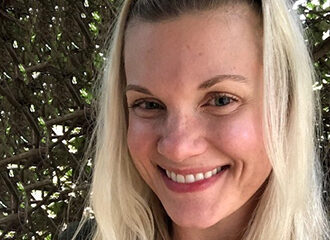 Grounding exercises can support you in becoming more present and accepting of your emotional experiences. Rather than trying to avoid or control distressing thoughts and sensations, grounding skills can help you gently return to the present moment, making space to notice what you’re feeling with curiosity and compassion. These practices often engage your senses to help you reconnect with both your inner experience and your external surroundings – without judgment – in the here and now.
Grounding exercises can support you in becoming more present and accepting of your emotional experiences. Rather than trying to avoid or control distressing thoughts and sensations, grounding skills can help you gently return to the present moment, making space to notice what you’re feeling with curiosity and compassion. These practices often engage your senses to help you reconnect with both your inner experience and your external surroundings – without judgment – in the here and now.
If this is your first time trying a grounding exercise, consider practicing them when you’re feeling calm. This helps you learn how each practice feels in your body, which can support you in accessing these techniques more naturally when you feel overwhelmed and disconnected. With regular practice, grounding can become a helpful strategy to remain centered, aware, and less reactive, even in the midst of emotional discomfort.
Disclaimer: These methods are not intended to replace therapy, but to supplement ongoing work with a qualified professional.
Sensory Grounding
5-4-3-2-1 Method: Identify 5 things you can see, 4 things you can touch, 3 things you can hear, 2 things you can smell, and 1 thing you can taste. This technique helps anchor you in the present moment by engaging all five senses.
Focus on Your Breath: Pay close attention to each inhale and exhale. Notice the rhythm of your breathing and how it feels in your body.
Physical Grounding
Body scan: If it feels safe to do so, you might choose to lie down or sit in a comfortable position. You can keep your eyes open or gently closed. Begin by bringing gentle attention to your body, starting with your feet. Ask yourself: How do they feel? – hot, cold, tense, relaxed? Can you wiggle your toes or feel the surface beneath them? When you’re ready, you might slowly bring your awareness up through your legs, torso, arms, and head. Allow yourself to notice your physical sensations with curiosity instead of judgment.
Movement: Engage in gentle physical activity, like stretching or walking. Focus your attention on how your muscles move, how your feet touch the ground, and how your body feels as you shift positions.
Mental Grounding
Mental Exercises: Refocus your mind with simple grounding tasks, such as observing each thought as it arises, and allowing it to pass like a cloud drifting across the sky. You might also try counting backward from 100, naming all the colors you can see around you, or repeating a calming phrase or affirmation, such as “it’s safe to feel this right now”. These practices aren’t about avoiding thoughts or emotions; they’re about returning to the present moment and creating space for more compassionate awareness.
Visualize a safe place: When you notice distress beginning to arise, you might try visualizing a safe, peaceful, comforting location – real or imaginary. If you feel comfortable, use your senses to explore this space. What do you see? What sounds are present? How does the air feel? Are there any scents or tastes? You can try mentally stepping into this place and staying there for a few moments, noticing any calm or comfort that arises. Remember, if at any point it feels overwhelming, you can open your eyes and shift your attention back to your breath.
#WorldMentalHealthDayWithRenfrew #RenfrewRecharge
World Mental Health Day, an annual campaign hosted by the World Federation for Mental Health, is an international holiday which celebrates awareness for the global community by empowering individuals to take action and create lasting change on the importance of mental health.
The Renfrew Center is pleased to offer ten support opportunities for alumni and the greater community to come together in recognizing this year’s theme, Access to Services – Mental Health in Catastrophes and Emergencies.
Learn more here: https://renfrewcenter.com/world-mental-health-day-2025/



